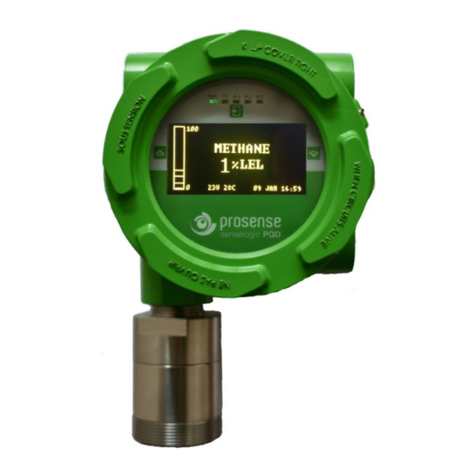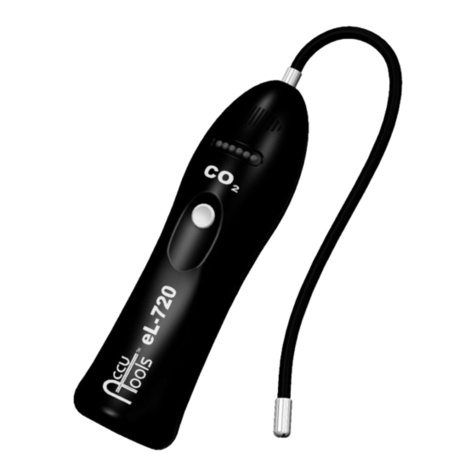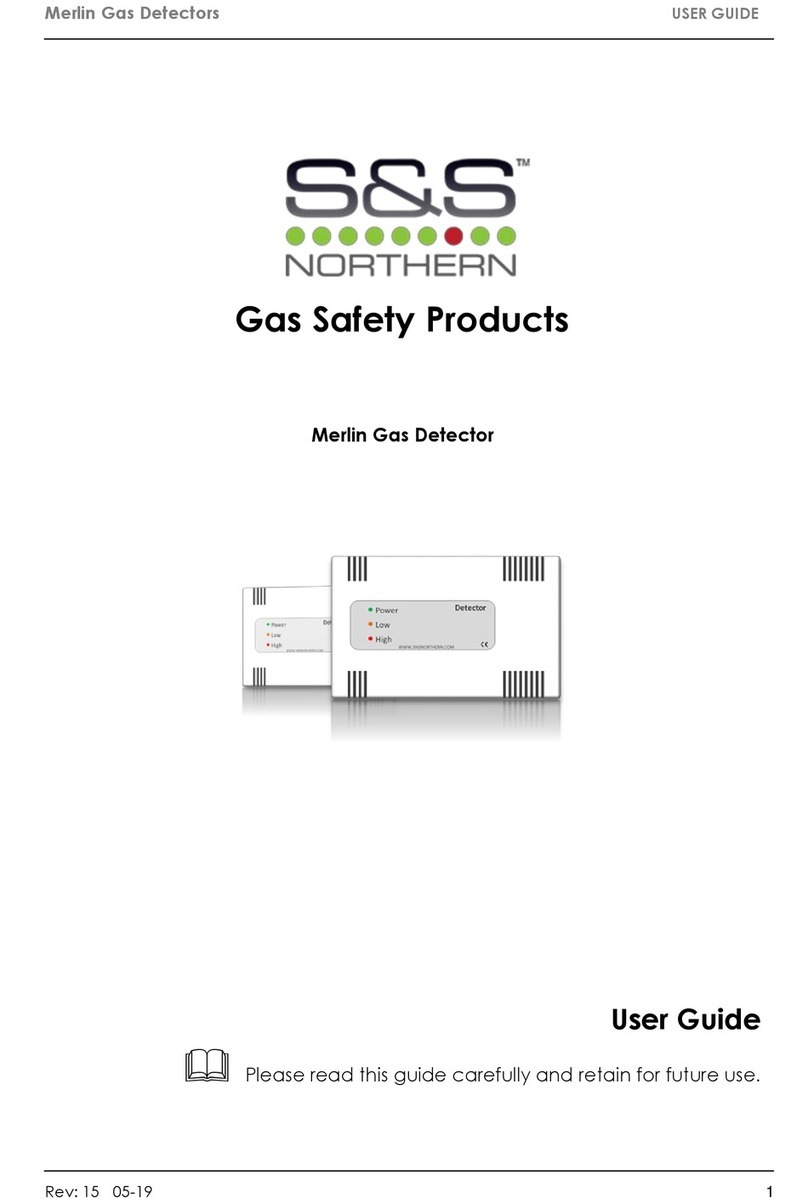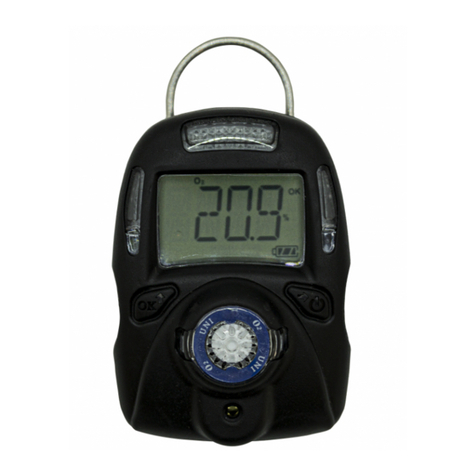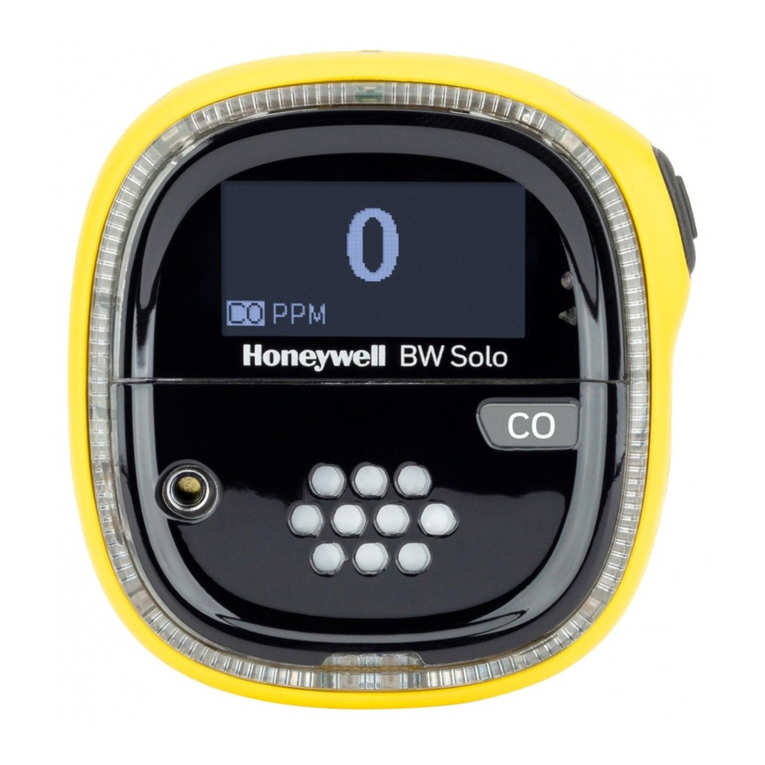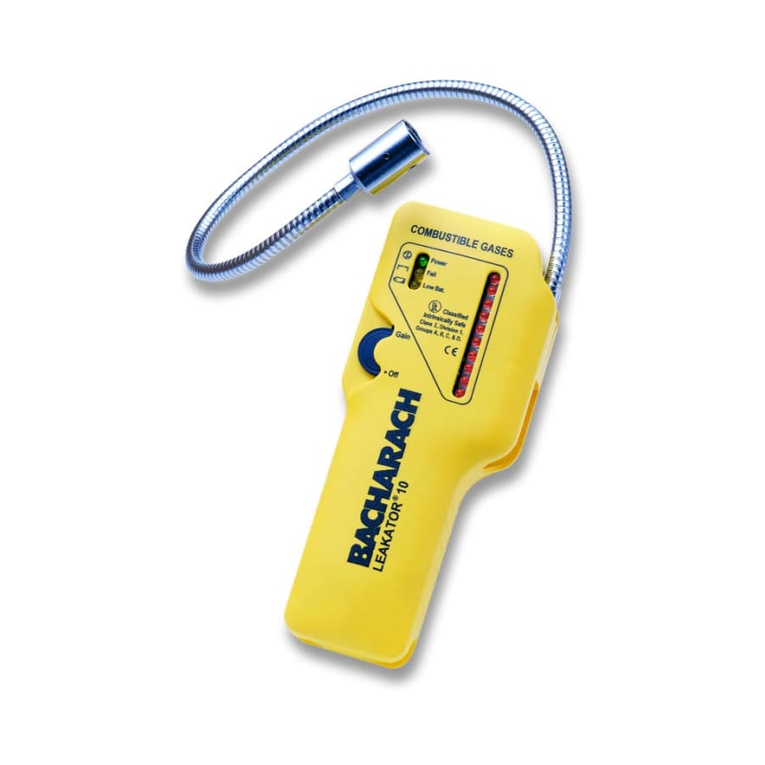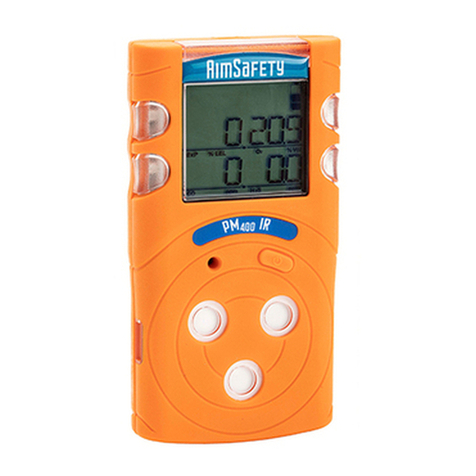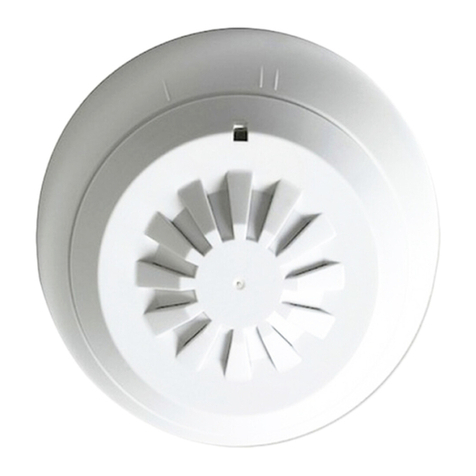Greystone Energy Systems CEDT Series User manual

Page 1
INTRODUCTION
The CO2sensor series uses a highly accurate and reliable
non-dispersive infrared (NDIR) sensor in an attractive, duct
mount enclosure to monitor return air CO2levels for indoor
applications. The compact dual channel CO2sensor achieves
excellent performance characteristics, including high
accuracy and low power consumption to ensure stable long
term operation. The device is also available with an optional
resistive temperature sensor.
BEFORE INSTALLATION
Read these instructions carefully before installing and commissioning the device. Failure to follow these
instructions may result in product damage. Do not use in an explosive or hazardous environment, with
combustible or ammable gases, as a safety or emergency stop device or in any other application where
failure of the product could result in personal injury. Take electrostatic discharge precautions during
installation and do not exceed the device ratings.
NOTE: This CO2sensor incorporates a Self Calibration feature to correct CO2sensor drift. This CO2sensor
is recommended for applications where the CO2level will be close to normal (400 ppm) at least one hour
per day. If the monitored space is occupied 24 hours or consistently maintains higher levels of CO2level,
the CD Series is recommended.
MOUNTING
The CO2duct type sensor installs on the outside of a return air duct with the sampling tube inserted into
the duct. Mount the sensor in an easily accessible location in a straight section of duct at least ve feet
from corners and other items that may cause disturbances in the air ow. Avoid areas where the detector
is exposed to vibrations or rapid temperature changes. See Figure 1.
The duct CO2detector principal of operation is based on the Venturi eect of the probe that extends into
the HVAC duct. Air owing through the duct is forced into the vent holes on one side of the probe, into the
enclosure, over the CO2sensor and then is drawn back out of the enclosure via the probe vent holes on the
opposite side.
NOTE to ensure proper humidity and temperature readings, the RH/T inlet on the probe must be installed
directly into the airow. See Figure 1.
Drill or punch a 7/8”or 1”hole in the duct at the preferred location and insert the probe into the hole to mark
the enclosure mounting holes. Remove the unit and drill the two mounting holes. Clean all drilled holes
of debris before mounting the device. Mount the enclosure to the duct with two sheet metal screws such
that the duct air ow is parallel with the vent holes in the probe (i.e.: air ows directly into the probe holes).
To prevent air leaks, ensure the gasket is compressed around the probe between the device enclosure and
the air duct.
The enclosure has a hinged cover with a latch. Open the cover by pulling slightly on the latch on the
bottom side of the enclosure and at the same time pulling on the cover, as illustrated in Figure 2.
A 1/2" NPT threaded connection hole is provided in the left side of the enclosure. Screw the EMT connector
or cable gland connector in until tight. See Figure 3. It is recommended that weatherproof conduit or
cable gland ttings be used. The F style enclosure includes a 1/2" NPT to M16 thread adapter and cable
gland tting.
Two security screws are provided which can be installed to help secure the cover once settings and wiring
connections are complete. See Figure 4.
Figure 1 Figure 3Figure 2
Thread adapter and cable
gland tting
EMT Connector
IN-GE-CEDTXXX-03 Copyright © Greystone Energy Systems, Inc. All Rights Reserved Phone: +1 506 853 3057 Web: www.greystoneenergy.com
Duct Carbon Dioxide Sensor
CEDT Series - Installation Instructions

Page 2
WIRING
Deactivate the 24 Vac/dc power supply until all connections are made
to the device to prevent electrical shock or equipment damage.
Follow proper electrostatic discharge (ESD) handling procedures
when installing the device or equipment damage may occur. Use 22
AWG shielded wiring for all connections and do not locate the device
wires in the same conduit with wiring used to supply inductive loads
such as motors. Make all connections in accordance with national and
local codes.
This is a 3-wire sourcing device. Connect the plus dc or the ac voltage
hot side to the POWER terminal. The supply common is connected to the COMMON terminal. The device is
reverse voltage protected and will not operate if connected backwards. It has a half-wave power supply so
the supply common is the same as the signal common. Several devices may be connected to one power
supply and the output signals all share the same common. Use caution when grounding the secondary of
a transformer or when wiring multiple devices to ensure the ground point is the same on all devices and
the controller.
The analog output is available on one of the CO2 terminals. Either the mA or VOLT output terminal may
be used (but not both at the same time). This signal is used for either voltage or 4-20 mA active output as
shown in Figure 5. In voltage mode the output is selectable for either 0-5 or 0-10 Vdc using the PCB jumper.
The current output operates in the active mode and does not require a loop power supply (the signal
current is generated by the transmitter and must not be connected to a powered input or device damage
will result).
Check the controller Analog Input to determine the proper connection before applying power. Both current
and voltage signals are referenced to the COMMON
terminal. The analog output signal is typically connected
directly to the Building Automation System (B.A.S.) and
used as a control parameter or for logging purposes.
The two-wire temperature sensor output is available
with various RTDs and thermistors to suit all control
applications and is available on the TEMP SENSOR
terminals as shown in Figure 5.
PWR
COM
mA
VOLT
TEMP
SENSOR
5V
Wiring for voltage output signal
and 24 Vdc power from controller
PWR
COM
mA
VOLT
+24 Vdc
COMMON
0-5 or 0-10 Vdc In
Controller
CO2
Wiring for 4-20 mA output and external
24 Vac power transformer or power supply
PWR
COM
mA
VOLT
+24 Vac/dc
COMMON
COMMON
Analog Input
CO2
10V
5V
+
Analog Input
COMMON
Controller
TEMP
10V
Figure 5
Figure 4
IN-GE-CEDTXXX-03 Copyright © Greystone Energy Systems, Inc. All Rights Reserved Phone: +1 506 853 3057 Web: www.greystoneenergy.com

Page 3
OPERATION
The output signal is available on one of the CO2 terminals and is connected to the BAS analog input
which reads the signal and calculates the CO2 ppm value using correct scaling for the range and signal
type. The CO2 value is used to control output ventilation devices or initiate alarms.
If an optional temperature sensor is installed it will be wired to an analog input of the BAS that is set for
the specic resistance type. This could be a 10K thermistor, a 1000 ohm RTD or other sensor values. The
BAS reads the resistance signal and converts it to a temperature value.
The device includes a red LED on the PCB to indicate correct operation. In warm-up mode (the rst 1
minute after power is applied), the LED blinks at 2 times per second. After the warm-up period the LED
will blink once every 4 seconds to indicate normal operation. If the CO2 level is above the maximum
scale (over-range), then the LED will blink once per second.
When activated for the rst time a period of minimum 7 days is needed so that the algorithm can nd its
initial parameter set for Self Calibration. The sensor has to be exposed to fresh air for at least 1 hour every
day. Also during that period, the sensor may not be disconnected from the power supply, otherwise the
procedure to nd calibration parameters is aborted and has to be restarted from the beginning
CALIBRATION
Every sensor is factory calibrated and will achieve stable long term operation due to using dual IR
detectors and proprietary signal processing technology. The duct CO2 sensor is designed for simple
integration into any BAS system and for long term trouble free operation. As such, eld calibration is not
available or recommended on the product.
OUTPUT SIGNAL
The CO2 output is scaled such that 4-20 mA or 0-5 Vdc or 0-10 Vdc equals 0 to 2000 ppm.
For 4-20 mA output type, connect the mA output terminal to the controller analog input. The COMMON
terminal is the signal reference. Typically, this type of input would have a 250 ohm input impedance.
If using voltage output type, connect the VOLT output terminal to the controller analog input. The
COMMON terminal is the signal reference. Typically, this type of input would have a high impedance
> 10 Kohms. The VOLT output signal can be scaled as 0-5 or 0-10 Vdc by changing the jumper position on
the PCB.
SPECIFICATIONS
SENSOR
CO2 Sensor ...................................... Dual channel non-dispersive infrared (NDIR)
Range................................................. 0-2000 ppm
Accuracy ........................................... ± (30 ppm + 3% of reading)
Response Time ............................... 20 seconds (T63)
Sensor Life Span............................. >15 years
OUTPUT
Output Signals ..................................4-20 mA, 0-5 Vdc, 0-10 Vdc (eld selectable)
Drive Capability................................Current: 600 max @ 24 Vdc
Voltage: 10K min
POWER SUPPLY
Power Supply.....................................24 Vac/dc ± 20% (non-isolated half-wave rectied)
Consumption.....................................80 mA max @ 24 Vdc, 160 mA max @ 24 Vac
Protection............................................Reverse voltage and transient protected
OPTIONS
Optional Temperature Sensor....Various RTDs or thermistors as a 2-wire resistance output
GENERAL
Probe.....................................................152 mm L x 21.6 mm Diameter (6" x 0.85")
Enclosure Material...........................Polycarbonate, UL94-V0, IP65 (NEMA 4X)
Enclosure Dimensions...................112 mm W x 117 mm H x 53 mm D (4.4" x 4.6" x 2.1")
Warm-up Time...................................1 minute
Temperature Dependency......... ±2.5 ppm/°C
Operating Conditions....................0 to 50°C (32 to 122°F), 0-90 %RH non-condensing
Storage Conditions.........................-40 to 70°C (-40 to 158°F), 0-85 %RH non-condensing
Wiring Connections........................Screw terminal block (14-22 AWG)
Approvals.............................................CE, RoHS
Country of Origin..............................Canada
IN-GE-CEDTXXX-03 Copyright © Greystone Energy Systems, Inc. All Rights Reserved Phone: +1 506 853 3057 Web: www.greystoneenergy.com

PRINTED IN CANADA
Page 4
DIMENSIONS
116.5 mm
4.585"
99.7 mm
3.93"
0.5" NPT
112.5 mm
4.43"
53.7 mm
2.11"
152 mm
6"
22.5 mm
0.88"
IN-GE-CEDTXXX-03 Copyright © Greystone Energy Systems, Inc. All Rights Reserved Phone: +1 506 853 3057 Web: www.greystoneenergy.com
Table of contents
Other Greystone Energy Systems Gas Detector manuals
Popular Gas Detector manuals by other brands
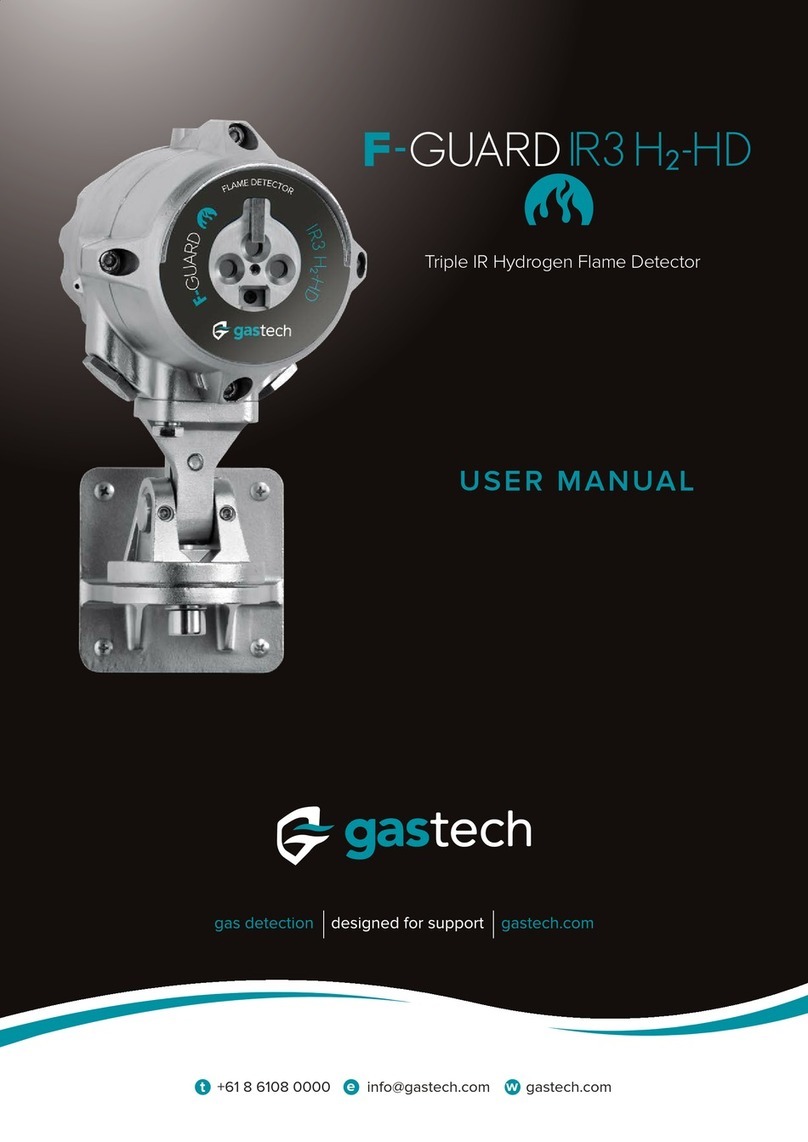
GasTech
GasTech F-Guard-IR3-H2-HD user manual

Guardian
Guardian FMS 65 Series owner's manual

Wetekom
Wetekom 58 18 43 instruction manual

BEP
BEP 600 Series Installation and operating instructions
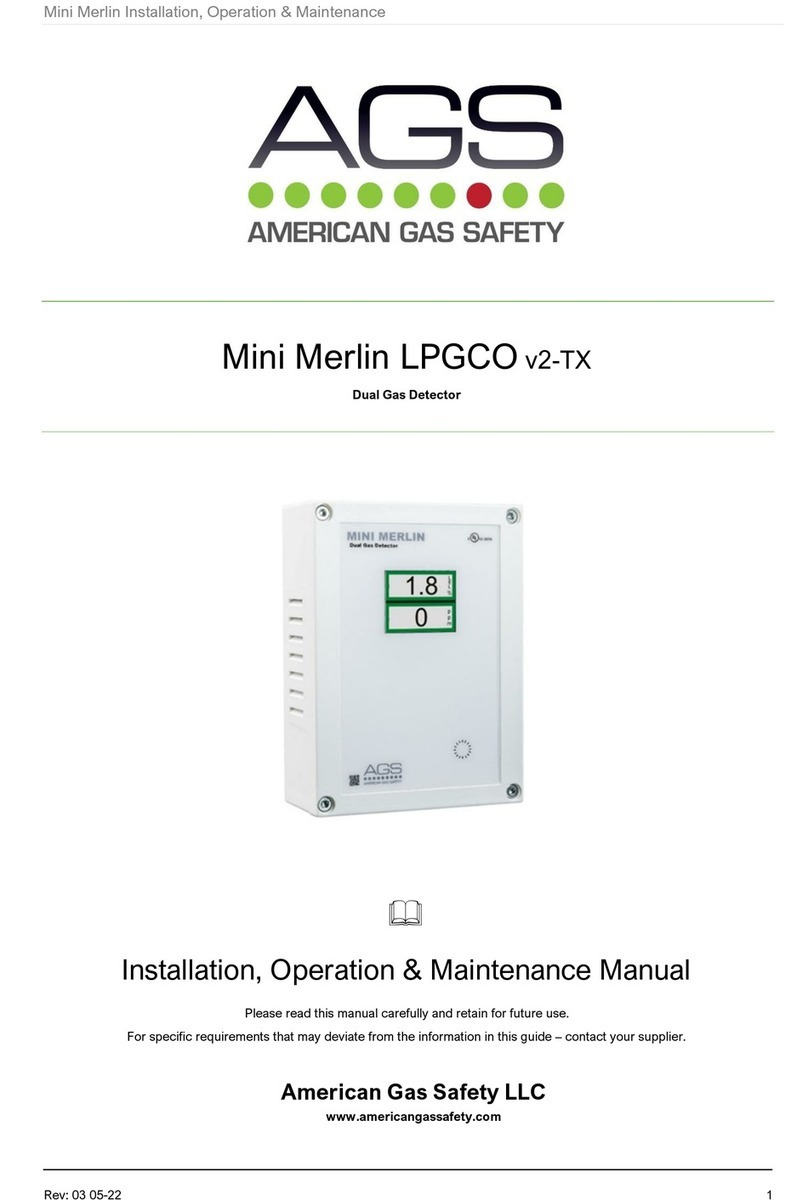
AGS
AGS Mini Merlin LPGCO v2 TX Installation, operation & maintenance manual
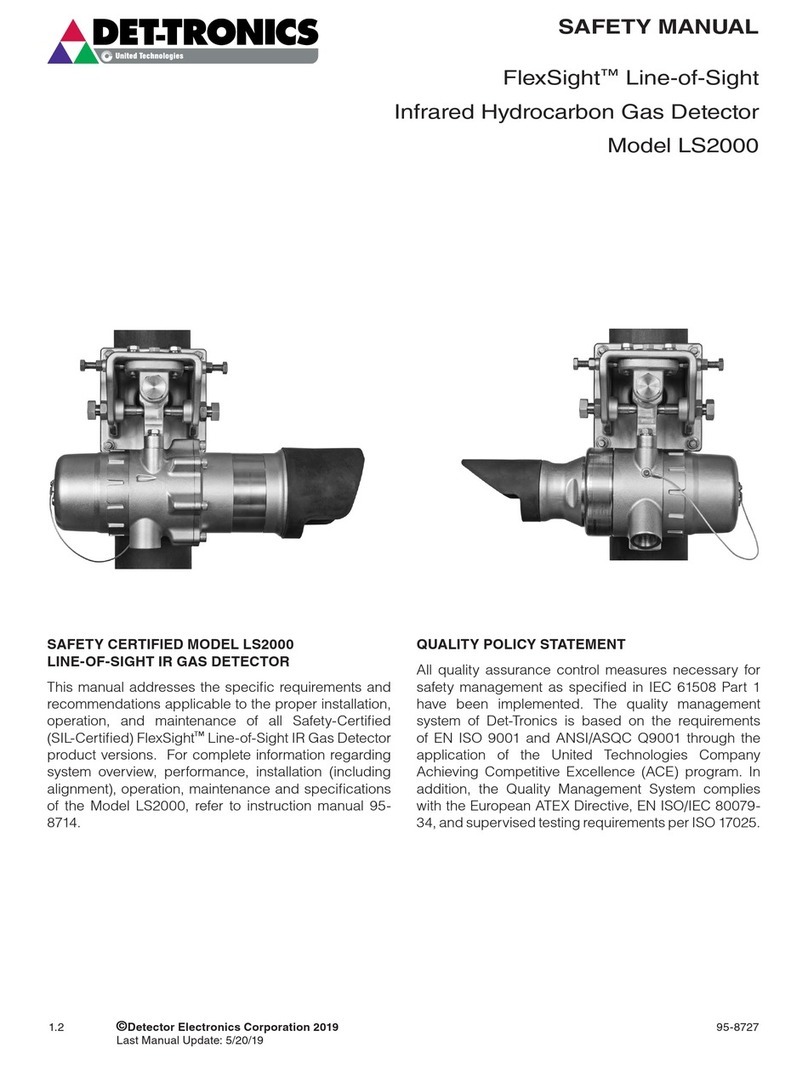
Det-Tronics
Det-Tronics FlexSight LS2000 Safety manual

